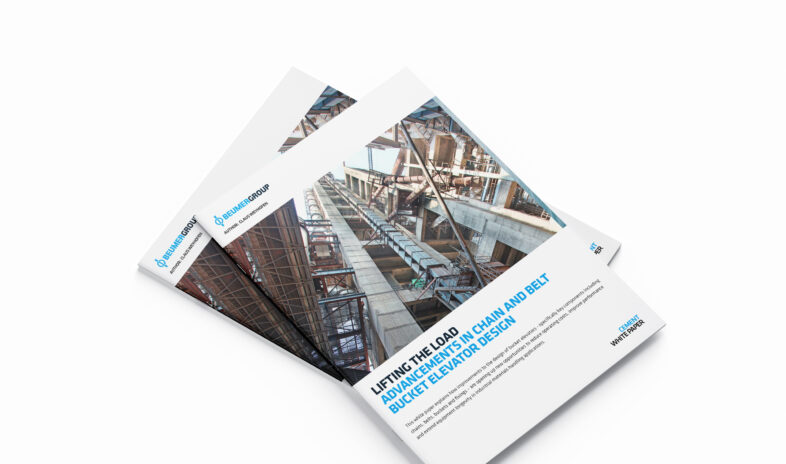3/ Using packaging that protects and performs during automation
The parcels need to withstand handling while moving through automated sorters. Fulfilment and distribution centres should follow the carrier’s size, weight and durability guidelines to avoid jams, damage or manual handling.
However, the industry needs to be cautious about switching to new ‘eco-friendly’ packaging designs, as some sustainable materials or shapes can quickly deteriorate in high-speed sorters. This can cause jams and damage, requiring manual handling.
The solutions that enable fulfilment and distribution centres to overcome such challenges include:
- Verifying new packaging with the carrier before full adoption – running pilot shipments through sortation can assess durability, scanner readability and handling performance before rolling out at scale
- Standardising packaging dimensions where possible (if not already in the SLA) – this aligns with the carrier’s system capabilities, such as dimension limits
- Applying labels on flat, uncreased surfaces to improve scanner readability
4/ Sharing rolling volume forecasts to enable better planning
Carriers plan resources and capacity based on expected parcel volumes, so fulfilment and distribution centres that maintain a steady daily output make it easier for the carriers to operate at peak efficiency.
If the fulfilment and distribution centre anticipates a spike or drop in volume, it should notify its carrier in advance so the capacity can be adjusted. This is especially important during seasonal peaks, as accurate forecasts can prevent delays across the entire delivery chain.
The solutions that enable fulfilment and distribution centres to overcome such challenges include:
- Sharing rolling volume forecasts with the carrier – weekly during normal periods, daily during the peak season.
- Tracking historical trends to predict seasonal surges – analysis of past order data, marketing calendars and industry trends can help forecast peaks
- Smoothing out outbound volumes by staging dispatches over multiple days – breaking up large batches into smaller, evenly-spaced shipments can avoid overwhelming the carrier on any single day
5/ Integrating technology for seamless handover
Many fulfilment and distribution centres don’t use Application Programming Interfaces (APIs), or other shipping management tools, for label generation, tracking and reporting. Some use their WMS, or order fulfilment software, to connect to the carrier’s API – but that is only a partial integration and it limits efficiency.
APIs are ideal for creating shipment labels, booking pick-ups, tracking parcels and getting delivery status updates – they are a useful tool for connecting with thousands of different customer systems, and automation is key to handling that scale.
The real advantage comes from integrating the API directly into fulfilment and distribution centre workflows, as this enables end-to-end automation and real-time data exchange. This not only speeds up processing and reduces the risk of errors, but it also allows for advanced analytics to identify bottlenecks, optimise routes and cut costs, which benefits both the fulfilment and distribution centre and the carrier.
The solutions that enable fulfilment and distribution centres to overcome such challenges include:
- Automating the processes of label printing, manifest generation and pick-up scheduling through the APIs – once the WMS is linked directly to the carrier’s API, tasks will trigger automatically, reducing manual input and errors
- Using real-time tracking feeds from the API to monitor parcels after handover – dashboards can display live shipment statuses so issues can be spotted and resolved quickly
- Sharing and analysing performance data jointly with the carrier to drive continuous improvement – reviewing key metrics like scan compliance, handover times and misroutes to identify recurring bottlenecks and improvement opportunities
6/ Managing end-consumer communication proactively
The carriers handle the physical delivery, but it’s the fulfilment and distribution centre that manages the relationship with the end-consumer. To reduce pressure on the carrier’s deliveries, the fulfilment and distribution centre must work closely with the carrier to keep end-consumers informed about tracking details, delivery estimates and proactive delay notifications – all of which help maintain a high level of end-consumer satisfaction and protect the brand’s reputation.
The solutions that enable fulfilment and distribution centres to overcome such challenges include:
- Sending tracking numbers to the end-consumer immediately after the parcel is handed to the carrier – best automated via the order management system to avoid delays in providing tracking access
- Accurate delivery times – base delivery estimates on actual carrier transit data, not generic timelines
- Automated alerts – via SMS, email or app notifications triggered by carrier status updates, the alerts notify end-consumers of delays and revised delivery dates
- Better coordination with partners – ensures all end-consumer notifications are refined according to real-world results
TAKEAWAY
When fulfilment and distribution centres focus on accuracy, scheduling, packaging performance, volume predictability, technology integration and proactive communication, they create a smoother handover to the carriers. This enables the carriers to deliver efficiently and reliably, thus improving the end-consumer’s delivery experience. By addressing the areas listed in this article, fulfilment and distribution centres are not just meeting service-level expectations; they are strengthening the entire delivery chain.








